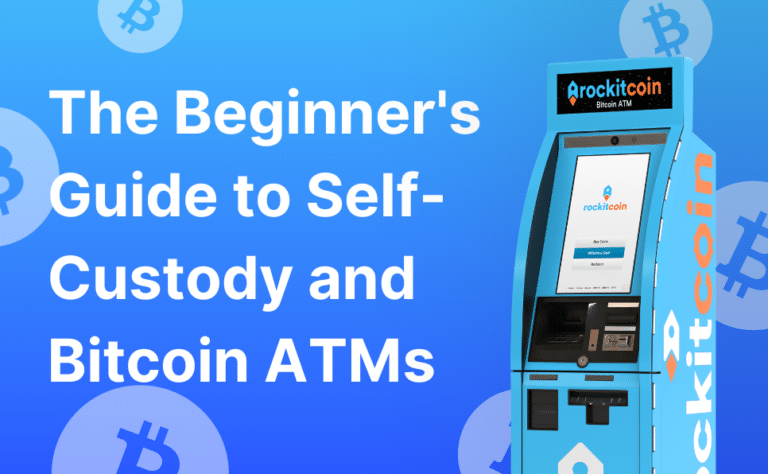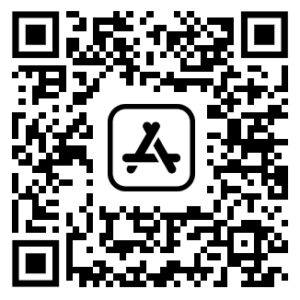Bitcoin is the first successful cryptocurrency. Like any currency, cryptocurrencies can be used to buy or sell goods and services. Unlike fiat currencies, like the US dollar (USD) and the euro (EUR), the Bitcoin network is both decentralized and digital. But what does that mean exactly?
Digital Currency
Let’s start with the digital part. Digital currencies can only be used via electronic devices like computers and smartphones*. This might sound like a completely foreign concept. But using a digital currency is somewhat similar to using a debit card.
Debit cards allow you to buy items without ever exchanging physical bills or coins. Instead, when you buy something with a debit card, funds from your bank account are digitally transferred into the seller’s bank account. Although these transactions are digital, they’re still transferring traditional fiat currency. And you can always go to a bank or ATM to withdraw physical cash with your debit card.
Digital currencies, like Bitcoin, have no physical component. Digital currencies are stored in a digital ledger. This ledger tracks all withdrawals, deposits, and the creation of new tokens.
Where does this ledger live? On thousands and thousands of computers all around the world. Each computer has a complete copy of the ledger so that if any (or many) of the computers crash, there’s always a backup somewhere. Each computer is referred to as a “node”.
How Does The Technology Work?
Bitcoin’s digital ledger, known as the blockchain, is a fundamental aspect of the digital currency’s security and value. The Bitcoin blockchain is decentralized, meaning it operates on a network of computers (nodes) spread across the world. This decentralization ensures that no single entity or central authority has control over the network, making it resistant to censorship and manipulation. The most important aspect of the blockchain is that it is a transparent and publicly accessible ledger. It records all Bitcoin transactions in chronological order, and this information is visible to anyone on the network. This transparency promotes trust and accountability as anyone can become a “miner” whose job is to verify transactions and track the movement of funds.
Once a transaction is recorded on the blockchain, it becomes extremely difficult to alter or manipulate. The use of cryptographic hashing and consensus mechanisms ensures that the data on the blockchain is tamper-resistant. This immutability makes the blockchain highly secure and prevents fraudulent activities.
But how does the blockchain maintain such high levels of security?
- The blockchain’s security is achieved through a combination of cryptographic algorithms and consensus mechanisms.
- Transactions are verified and added to the blockchain through the mining process, where miners compete to solve complex mathematical problems.
- This process ensures that the majority of participants in the network agree on the validity of transactions, making it difficult for hackers and scammers to manipulate the ledger or steal funds.
Ultimately, the blockchain’s design makes it resistant to fraud and double-spending. Each transaction is verified by multiple participants in the network, and once it is confirmed and added to the blockchain through mining, it becomes nearly impossible to reverse or modify. This design enhances the security and integrity of the Bitcoin network. Digital currency is very secure!
The blockchain also enables easy transactions, meaning that buyers and sellers can transact with each other without the need for intermediaries or third parties. How? The cryptographic math ensures that transactions can be securely executed and validated without relying on a central authority (like a bank). This technology reduces costs, enhances privacy, and enables peer-to-peer transactions on a global scale.
The limited supply of Bitcoin, combined with the decentralized and secure nature of the blockchain, has made it attractive to investors and individuals seeking an alternative form of currency or investment.
Beginners in crypto should know that the blockchain’s significance lies in its ability to provide a secure, transparent, and decentralized platform for recording and verifying transactions. These characteristics contribute to the security, trustworthiness, and value of Bitcoin as a digital currency and asset.
What Is A Digital Wallet?
Unlike a wallet where you can store your dollar bills, a digital wallet does not hold any cryptocurrency. Instead, it acts very much like your debit card. The debit card contains a magnetic strip that has your account information. But only you know the PIN code required to transfer or withdraw funds.
Similarly, a digital wallet has a private and a public key. The public key is like your account number. It allows you to send or deposit money into the account. The private key is like your PIN code in that it’s impossible to withdraw funds from a digital wallet without it.
Deposit and withdrawal transactions are recorded and updated on the digital ledger across the globe using these two keys. These keys are managed using advanced mathematics called “cryptography,” which is an extremely secure way to process transactions. Since 2009, when Bitcoin was created, this cryptography has never been hacked or broken into.
Have people lost Bitcoin? Yes, but these losses have never been the result of the technology failing. Instead, user error is almost always to blame. If you leave your house keys in the front door of your home, it’s not reasonable to expect the lock to protect your property. It is important to create backups of your private keys. If your private key is lost or compromised, you may permanently lose access to your funds. Ensure that you have multiple copies of your private keys stored in different secure locations.
Your private key is the most critical piece of information when it comes to securing your cryptocurrency holdings. It is essential to keep your private key secret and secure, as anyone who gains access to it can potentially access and control your funds. Private keys should be stored securely to prevent any kind of unauthorized access.
It is recommended to use offline storage methods such as hardware wallets or paper wallets.
- Hardware wallets are physical devices that store your private keys offline, offering a high level of security.
- Paper wallets involve generating and printing your private key on a physical piece of paper, which can be stored in a safe place.
Be vigilant about phishing attempts and scams. Scammers may try to trick you into revealing your private key or other sensitive information through fraudulent websites, emails, or messages. Always verify the authenticity of the platforms and applications you use and be cautious when sharing personal information. Utilize two-factor authentication whenever possible to add an extra layer of security to your cryptocurrency accounts, and keep your wallet software and other cryptocurrency-related applications up to date. Developers often release updates that address security vulnerabilities or improve overall privacy. It is a good idea to regularly check for updates and apply them to ensure you have the latest security features.
From a digital perspective, cryptocurrency is one of the safest ways to perform withdrawal and deposit transactions. To open a digital wallet of your own, download and install the RockItCoin app from the Apple App Store or the Android Play Store. You can also find a step-by-step guide to setting up your RockItCoin Wallet on our FAQ page.
Decentralized Currency
Decentralized currencies, like Bitcoin, exist outside of the traditional banking system. When you use a debit card, it sends a signal to your bank to transfer funds to another bank. The transaction takes place on the banks’ private computer networks.
While debit cards rely on banks’ private computers to validate transactions, Bitcoin transactions are validated by nodes and Bitcoin miners via peer-to-peer technology. A node is simply a program run on a computer that validates transactions.
The nodes communicate with one another to confirm the accuracy of every transaction. Currently, there are about 83,000 Bitcoin Core nodes in operation. And anyone who wants to host a node may do so. Bitcoin miners are groups or of individuals who use powerful computers to validate transactions. The term cryptocurrency originates from the use of complex cryptography (codes) to keep transactions secure. When a miner’s computer processes this code, it confirms a block of transactions within the blockchain and they receive a small amount of Bitcoin as a reward.
No one single entity validates and approves the transactions. Anyone can (and is encouraged to) run a node of their own or mine Bitcoins for themself. And the more people who do, the more secure and robust the blockchain will be.
Bitcoin transactions don’t require any sort of centralized solution (like traditional banking institutions). This system puts currency in the hands of the collective community. Decentralized digital currencies seek to eliminate the need for centralized authorities, such as governments or banks, to facilitate transactions and provide trust. Instead, they utilize decentralized networks, typically based on blockchain technology, to enable peer-to-peer transactions and maintain a transparent and immutable ledger.
This decentralization
- promotes trust
- reduces the risk of censorship or manipulation
- and empowers individuals with greater control over their finances.
By removing intermediaries and reducing reliance on traditional financial infrastructure, decentralized digital currencies aim to lower transaction costs. These currencies often involve minimal or negligible fees for peer-to-peer transactions, especially when compared to traditional banking or remittance services, which can be expensive, particularly for cross-border transactions.
Decentralized digital currencies drive innovation by challenging traditional financial systems and introducing new possibilities for peer-to-peer transactions, programmable money, and decentralized applications. It has been widely discussed that decentralized digital currencies have the potential to disrupt various industries beyond finance, such as supply chain management, voting systems, intellectual property, and more.
The worth of each Bitcoin works via the concept of supply and demand. Each coin is worth exactly what individuals are willing to pay for them. No more, no less. The value of fiat currencies is far more complicated. Among other things, the value of currencies like the USD is based on the confidence the world has in the government or entity that issues the currency. But that’s a far more complicated topic for the purposes of this post.
Who Invented Bitcoin?
Satoshi Nakamoto is the pseudonym that the inventor of Bitcoin chose to identify themselves. The concept was introduced in a whitepaper titled “Bitcoin: A Peer-to-Peer Electronic Cash System,” published in October 2008. The whitepaper presented a decentralized digital currency system that aimed to address the shortcomings of traditional financial system. It proposed the use of a peer-to-peer network and a technology called the blockchain to enable secure and transparent transactions without the need for intermediaries. In January 2009, the Bitcoin network was launched, and the first block, known as the Genesis Block, was mined by Satoshi Nakamoto. This marked the beginning of the Bitcoin blockchain.
Bitcoin’s invention and origin marked the birth of cryptocurrencies and blockchain technology. Since its introduction, Bitcoin has gained widespread attention, adoption, and value, influencing the development of thousands of other cryptocurrencies and inspiring further innovation in the blockchain space.
But no one really knows the inventor’s true identity. Numerous people have speculated about who the creator may be, suggesting Nick Szabo, Dorian Nakamoto, and Craig Wright among others. However, given the decentralized nature of the currency, perhaps it’s better we never know.
How To Buy Bitcoin
Now that you know a little more about it, you might be wondering how you can buy Bitcoin. Making a purchase with Bitcoin is similar to sending an email. Digital wallets typically include a “send” section, like the “compose” section of an email client. Here, you type in the amount of Bitcoin you wish to send and the address to which you wish to send it. Finally, you click “send” and your transaction request is sent to the digital ledger. The ledger then updates to note the recipient as the new owner of the Bitcoins that were once yours.RockItCoin makes it easy to buy Bitcoin with cash from any of the 1,900+ RockItCoin machines conveniently located throughout the United States. You can also buy Bitcoin with a credit or debit card right here on our site.
*It is possible to write down or print out the private key for your Bitcoin wallet and give that to a person. A private key is basically the password to your wallet. Anyone with the private key to a wallet has full access to all of the funds within the wallet, like having a bank account number, its pin, and any form of ID that the bank might require. However, to send coins over the Bitcoin network, you’ll still need a computer.








